What is Camelot?
Camelot is a unique and highly efficient decentralized exchange (DEX) built to support and be the native DEX of the Arbitrum ecosystem by building a resilient and sustainable DEX. That helps orient the community as well as optimize capital for investors.
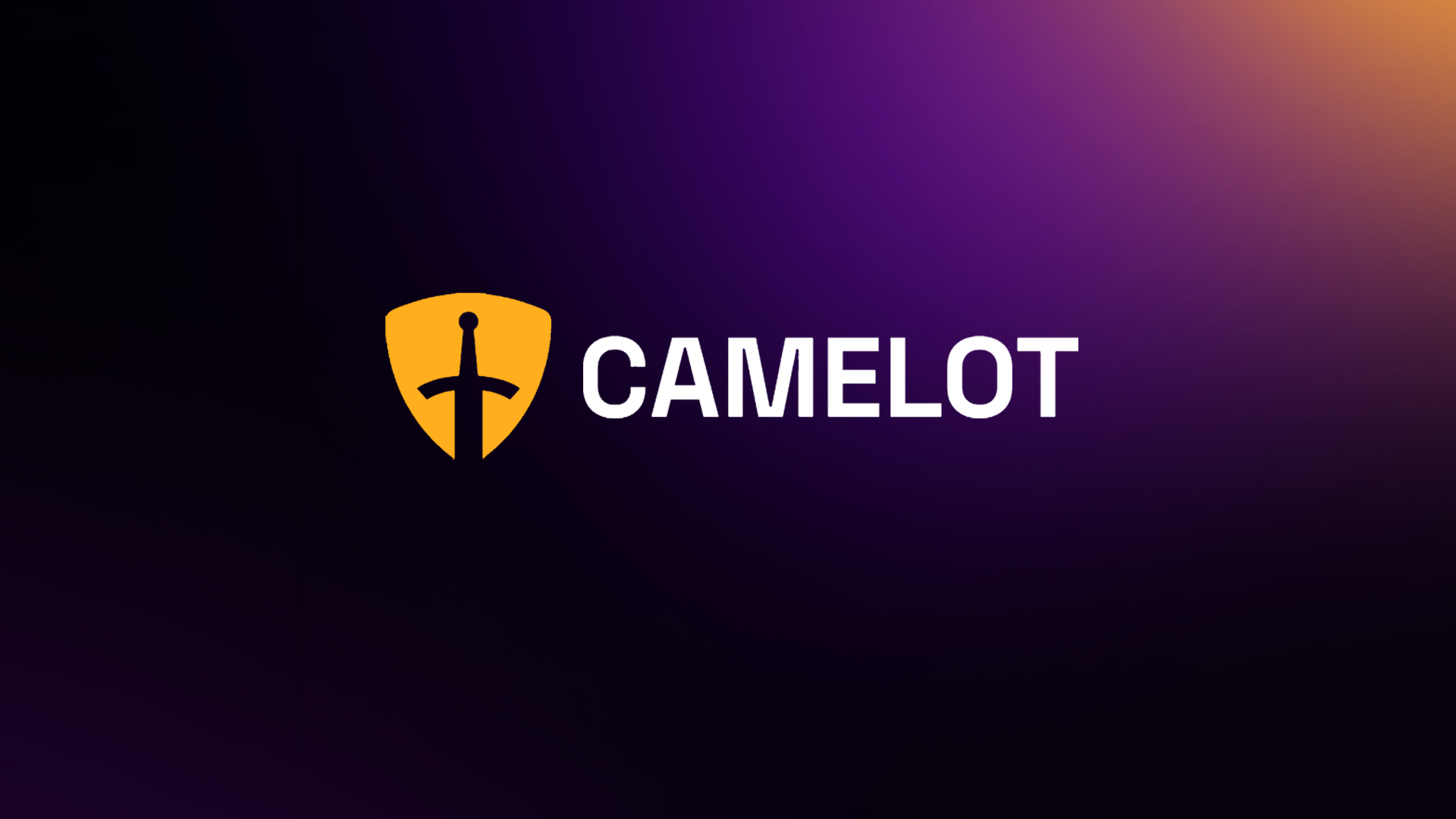
Products and outstanding features of Camelot
AMM
AMM is the core system of Camelot ecosystem with development orientation following the following methods:
- Dual liquidity: Creates a high degree of flexibility and customization
- Active in fees: Improve transaction efficiency, optimize fees for users
- Referral: Support other protocols on the ecosystem to generate more profit.
Staked Positions (spNFTs)

Camelot introduces a new liquidity approach with spNFTs – Staked Position Non-Fungible Tokens. Each Camelot LP will have a different stake position and can be minted into an NFT by wrapping your position in a smart contract.
spNFTs are treated as a deposit receipt by users and have improved features compared to regular LPs:
- Unique ID
- Full parameters of the user's position such as the number of tokens
- The value of tokens
- APY and lock time with Multipliers Point
Usage features of spNFTs:
- Deposit/Withdraw/Increase/Decrease the number of tokens inside the position.
- Edit Lock time, increase lock time
- Merge positions together, if positions have lock time, the position after merging will calculate the longest lock time
- Split positions, if positions have lock time, after splitting positions will have lock time equal to the original.
Yield Farming
Because of the Dual Liquidity mechanism, users who provide liquidity to Camelot will both receive rewards from the LP pair along with an incentive program with rewards of $GRAIL and $xGRAIL with a ratio of 80/20 respectively.
Nitro Pools
Nitro Pool is the place to create pools that provide liquidity for Camelot's partner project and for the user community.
In addition to the reward from providing liquidity, in the Nitro Pool, the project will create a new reward layer in $ETH to encourage liquidity for the projects inside.
There are 2 types of Nitro Pools:
- Official Nitro Pools: created by Camelot or previously reputable verified partners
- Community Nitro Pools: can be created by anyone.
It can be seen that this is a very good way to encourage liquidity for Camelot's partner projects, as the liquidity of projects on Arbitrum is very limited. Usually, each project will have a separate DEX with liquidity. If Camelot is successfully deployed, it is likely to be a large liquidity center for existing partner projects such as GMX, Buffer Finance, Sperax, JonesDAO, Dopex,...

Genesis Pools
is expected that this Pool will be open for about 6 months starting from November 22, 2022.Genesis Pool is a liquidity pool created initially for the purpose of stimulating liquidity for partner projects through Liquidity Farming in Camelot. However, most of the rewards are paid in tokens based on that and some $GRAIL + $xGRAIL.
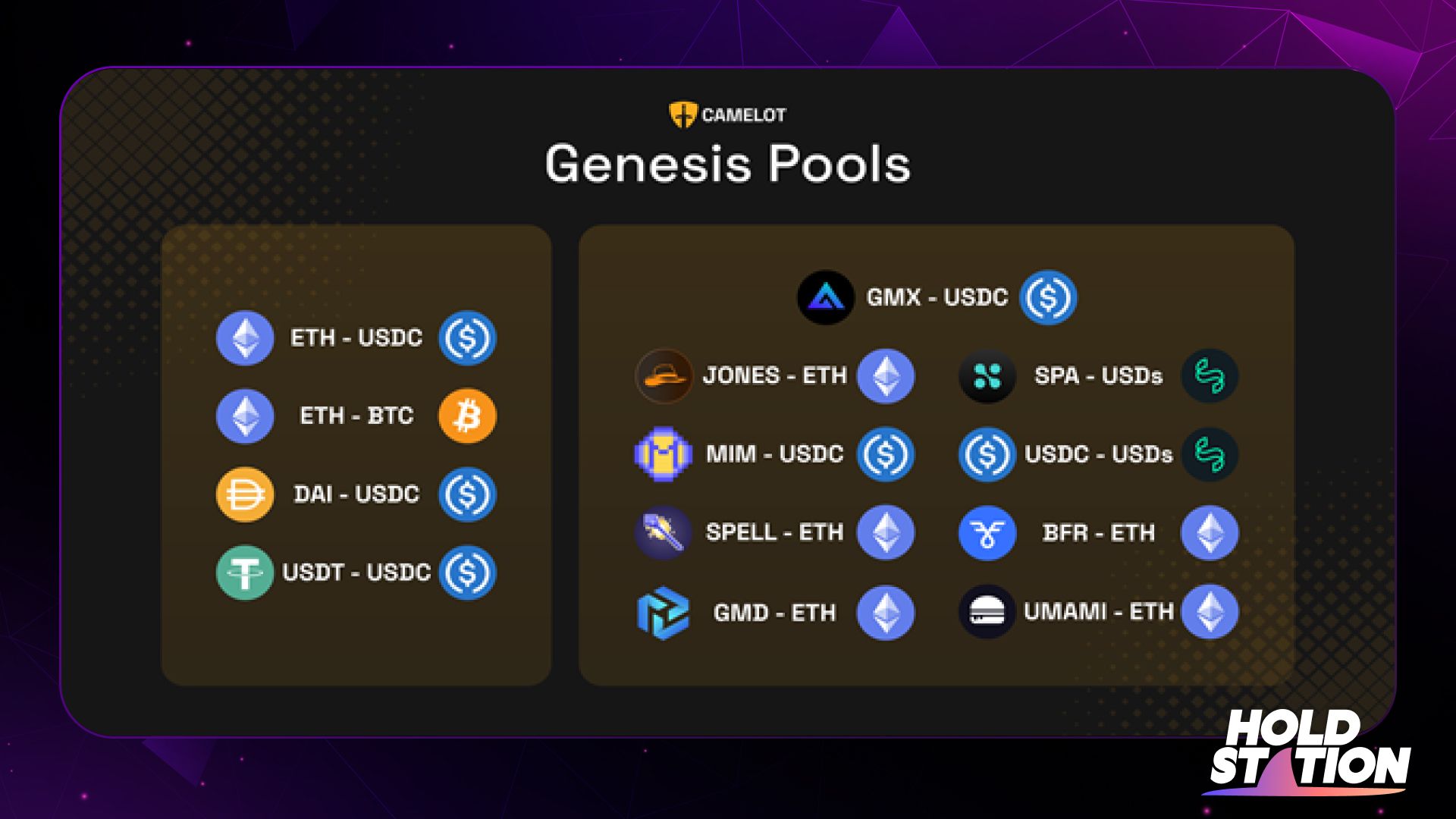
Plugin xGRAIL

Plugins are contracts associated with xGRAIL's contract. They can be created and integrated by anyone in the Camelot ecosystem. Some of the original Plugins are directly created by Camelot team (like dividend system, yield booster, launchpads,...)
Dividends: The majority of the earnings from the protocol are redistributed to users in the form of xGrail through the Dividends Plugin. Dividend distribution is distributed continuously (reward/second) in each weekly cycle.
Yield Booster: Through the YieldBooster plugin, every user can use their xGRAIL for a staking position (spNFT) to earn more profit. The increment factor will vary according to the LP of the stake position but will usually be x2 from the default value.
Community Plugins: Any user or protocol can provide or deploy their own plugins thanks to xGRAIL allocations, but they are subject to some common global technical requirements. protocol suite (Currently, the project has not officially announced these requirements). Just as Camelot will not be responsible for any Plugins authorized by third parties, so users need to be careful before approving new contracts to avoid unnecessary losses.
Governance & DAO
Community members can use their xGRAIL as a governance token, to vote on official proposals, more xGRAIL represents more voting power. Once a proposal is approved by the community through this process, a DAO consisting of team members and advisors executes the necessary contracts or transactions and makes the final decision. The final result of the vote will always go through DAO validation to prevent bugs or bad actors from promoting harmful changes to users as well as the platform.
Investors and partners of Camelot
Camelot currently has no official investors. Information about investors of Camelot will be updated later.
On the other hand, up to now, Camelot has also been cooperating with many partners who are projects in Arbitrum's ecosystem such as GMX, Umami, Buffer Finance, Sperax, JonesDAO, Nitro Cartel, GMD Protocol, Abracadabra.
Camelot's Roadmap
Currently Camelot has not announced the official long-term roadmap of the project but has announced the short-term launch schedule from November 22 to November 7 as follows.
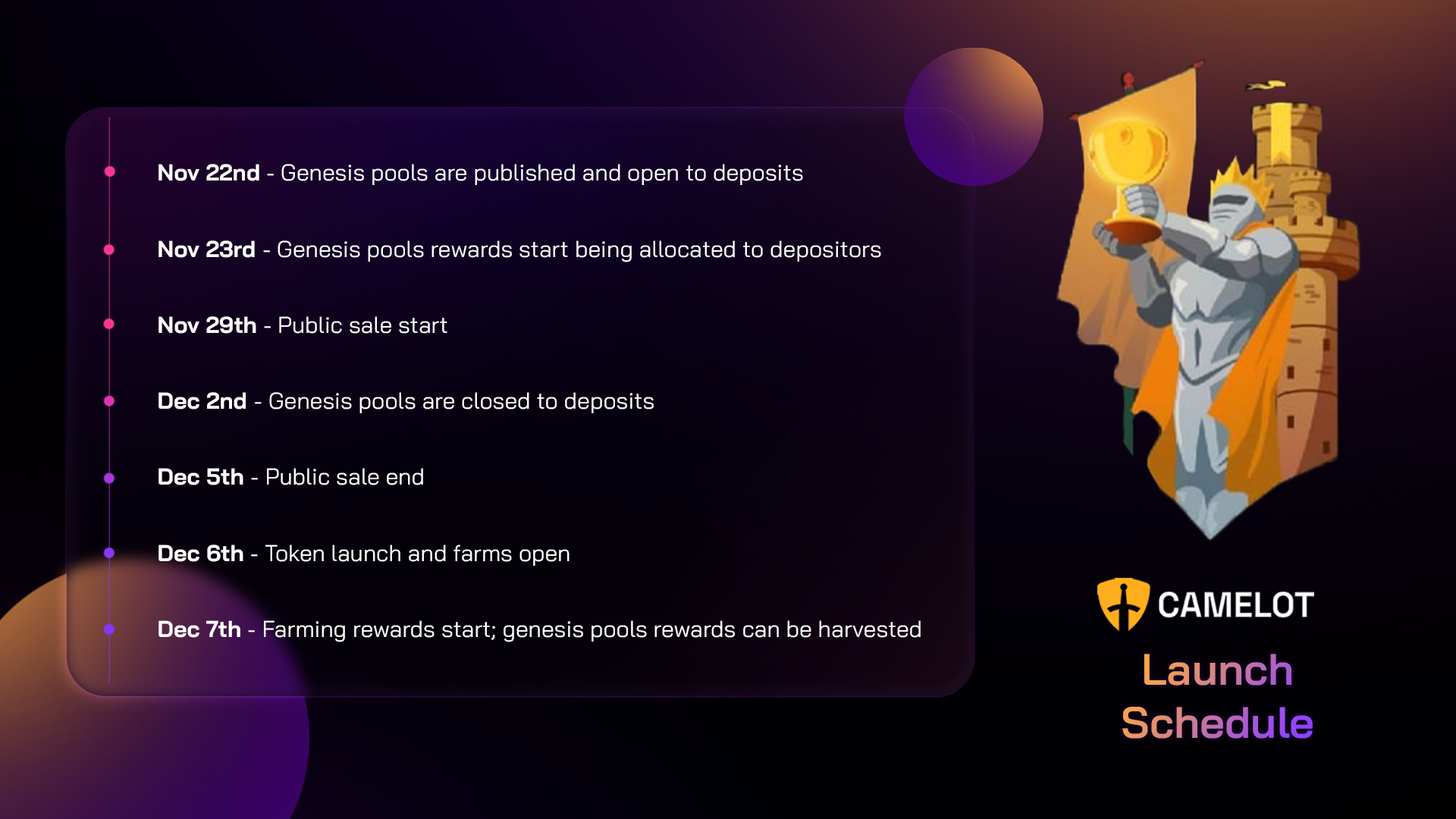
Camelot's Tokenomics
Basic information
- Name: Camelot native token
- Ticker: $GRAIL
- Type: Governance token
- Contract - Decision: Updating
- Total Supply: 100,000 $GRAIL
Token allocation and unlocking schedule
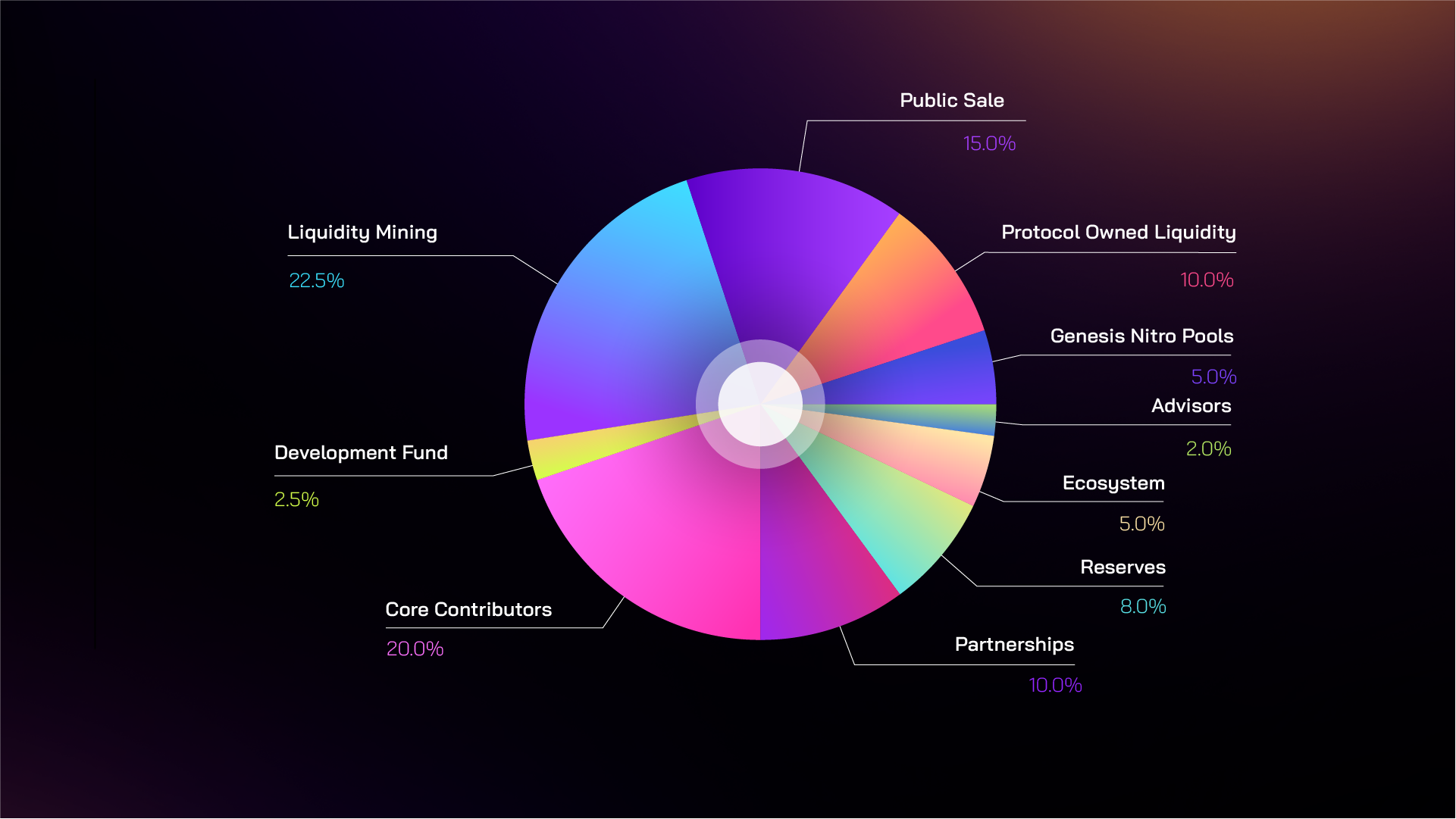
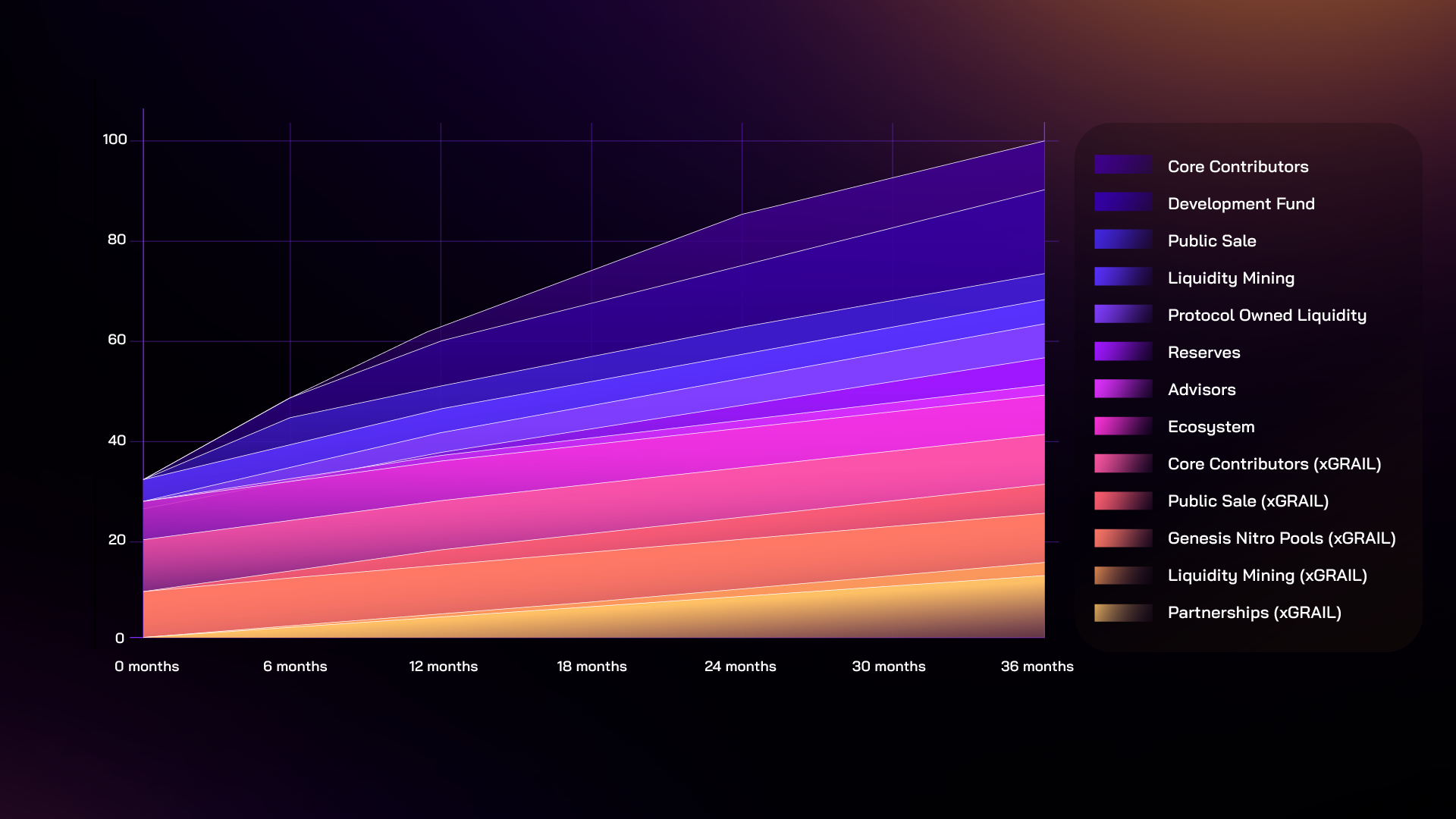
In addition to the allocation for Partnerships (xGRAIL) is cliffed for 6 months and unlocked for 2 years. The remaining allocations such as Liquidity Mining, Core Contributor, Advisors and Development Fund are all vested for 3 years.
Potential assessment of $GRAIL
With the Tokenomic Fair launch and collaboration with many other major platforms in Arbitrum, Camelot is receiving active community interest. The proof is that after nearly 1 day of pre-sale, Camelot has raised 1M$. In addition, there is about 8M$ being locked in the Genesis Pool, a very impressive number for a newly deployed project.
Besides, the $xGRAIL Vesting mechanism along with the $ETH reward will also encourage liquidity while reducing the selling pressure from the Liquidity Provider.
Real Yield through $xGRAIL is nothing new at the moment, but if Camelot becomes a large liquidity center in Arbitrum, there is a high probability of $GRAIL Wars will occur.
Holdstation Wallet - Your Gate to Web3 💜🦈
Make DeFi as easy as CeFi!
Disclaimer:
The information, statements and conjecture contained in this article, including opinions expressed, are based on information sources that Holdstation believes those are reliable. The opinions expressed in this article are personal opinions expressed after careful consideration and based on the best information we have at the writing's time. This article is not and should not be explained as an offer or solicitation to buy/sell any tokens/NFTs.
Holdstation is not responsible for any direct or indirect losses arising from the use of this article content.


